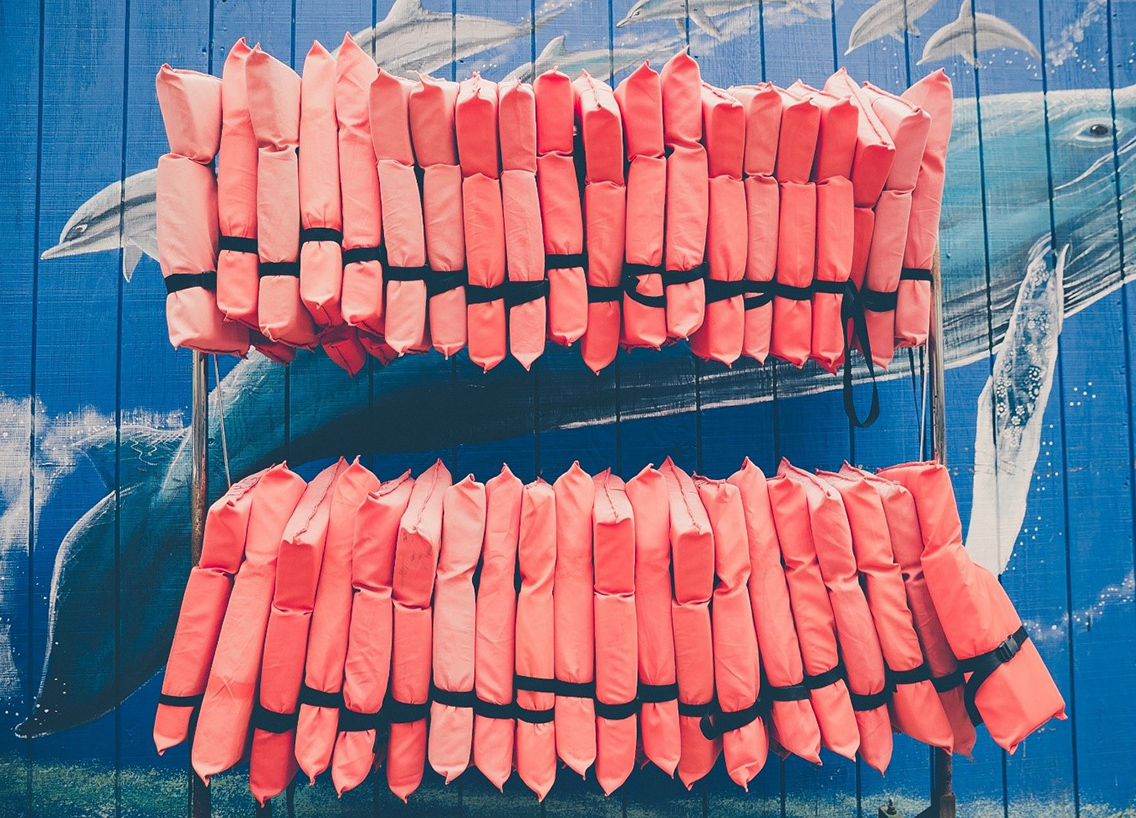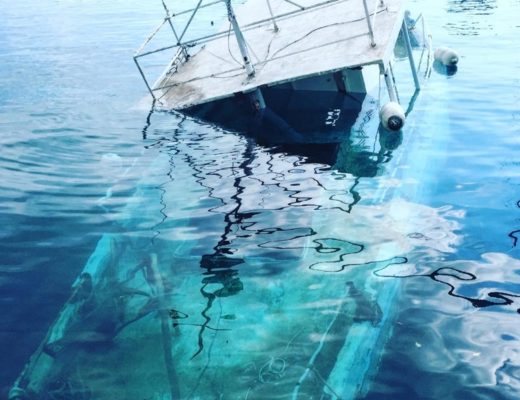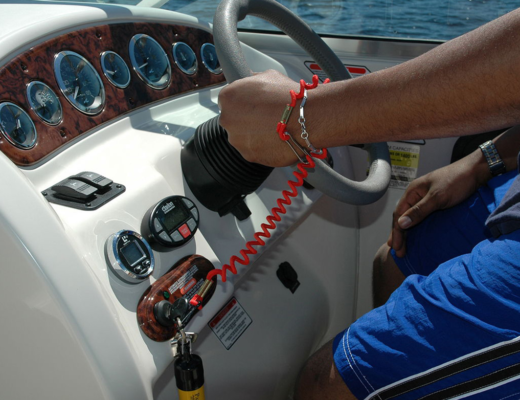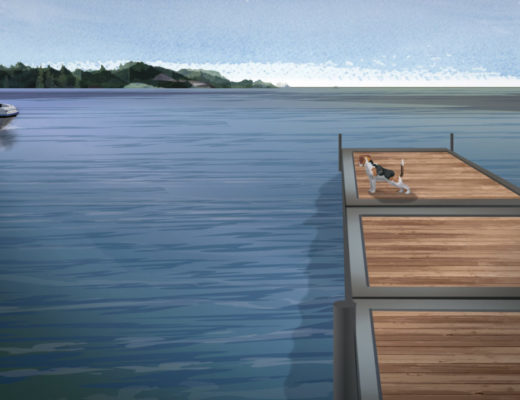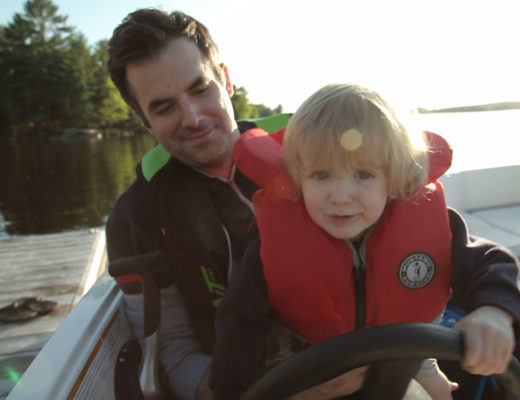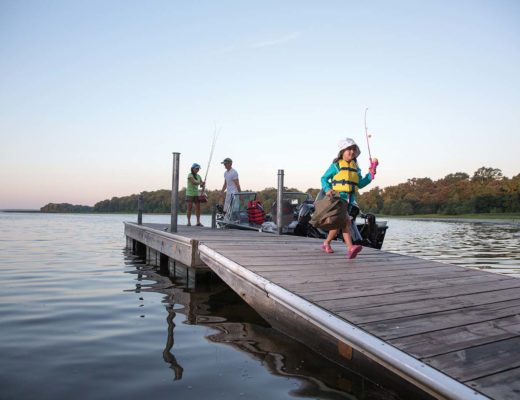The first time I went boating it was a small group of family friends in Muskoka, Ontario and we were having the perfect getaway weekend. We enjoyed sun-drenched weather all week and the views of the water from the boat made for the ultimate Instagram shots! Deciding to take a leap into the lake from the boat to cool off, we double-checked our life-jackets were secure and hopped into the water…
Unfortunately, I did not bring my own safety equipment and was at the mercy of whatever the host had available. As a result, what I ended up with was an old, ratty-looking life jacket that could easily have been worn by my great-grandfather. When I jumped into the water, the PFD (personal floatation device) proved to be much too big, pretty much engulfing me as soon as I hit the water. Luckily, the weather was good and the water was relatively shallow, so the only issue was the embarrassing (albeit hilarious) photograph my friends took of me being swallowed by my personal floatation device. But, in an emergency situation, this would have been dangerous, and could have proved disastrous!
Life jackets are an essential part of boater safety, and it is your responsibility as a captain to provide well-fitting life jackets to all passengers in your boat; even if it’s man-powered. Going for a slow row in your canoe with a friend? You’ll need two life-jackets. Taking a tour around the harbour with your family? Make sure that each passenger has a PFD that fits them properly and strap yourselves in. Going fishing alone? Wear your life jacket! Also, be aware that there are different PFD’s recommended for different activities. You wouldn’t go wake- boarding in a fishing life jacket, so make sure you know what safety equipment to use, and when.
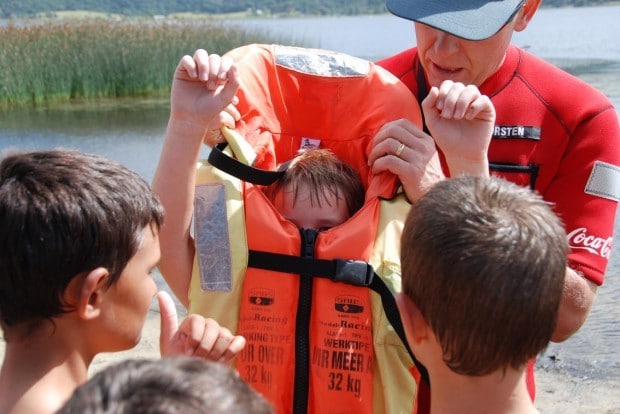
When choosing a PFD or life jacket, it is important to note how it fits you; it should fit snug, but not too tight. It is important to check that your device is appropriate for your size and weight; a PFD that’s too small won’t keep you afloat and one that’s too big may not keep your head out of the water. Be aware of the additional safety features on children’s PFD’s, which should include a collar neck and head support, reflective tape for additional visibility, as well as a strap for between the legs to securely fasten the vest.
Your device should be checked at the beginning of every season and on a regular on-going basis to make sure that it’s still in working condition. Perform buoyancy checks throughout the year by wading into the water, ensuring the device doesn’t allow your chin to submerge. Check the straps for signs of wear, and make sure that you store and care for the device properly. Ideal locations for PFD storage are easily accessible and well-ventilated areas of the boat, away from any chemicals or gasoline. Neglected safety equipment runs the risk of wearing out faster and due to typically wet and warm environments, causing them to be unfit for use; life jackets could start growing mold if not cared for properly. Your life jackets need to be approved by Transport Canada, the Canadian Coast Guard or the Fisheries and Oceans of Canada in order to be deemed ‘serviceable’. To check if your PFD is approved, take a look at the label on the inside.
BOATsmart! is your authority when it comes to boating safety and training. Our official boating course is approved by Transport Canada will get you certified to be out on the water in as little as three hours. You can even print out a temporary license as soon as you pass our exam. Register for your course now. If you lose your card at any point or want extras foe the cottage, boat and your wallet, no worries – you can order them right from our website.
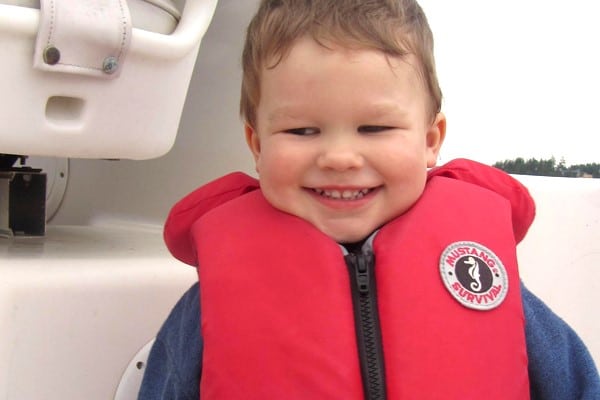
Follow us on our Facebook, Twitter and Instagram for more tips and tricks to having an enjoyable and safe boating season. See you on the water!
